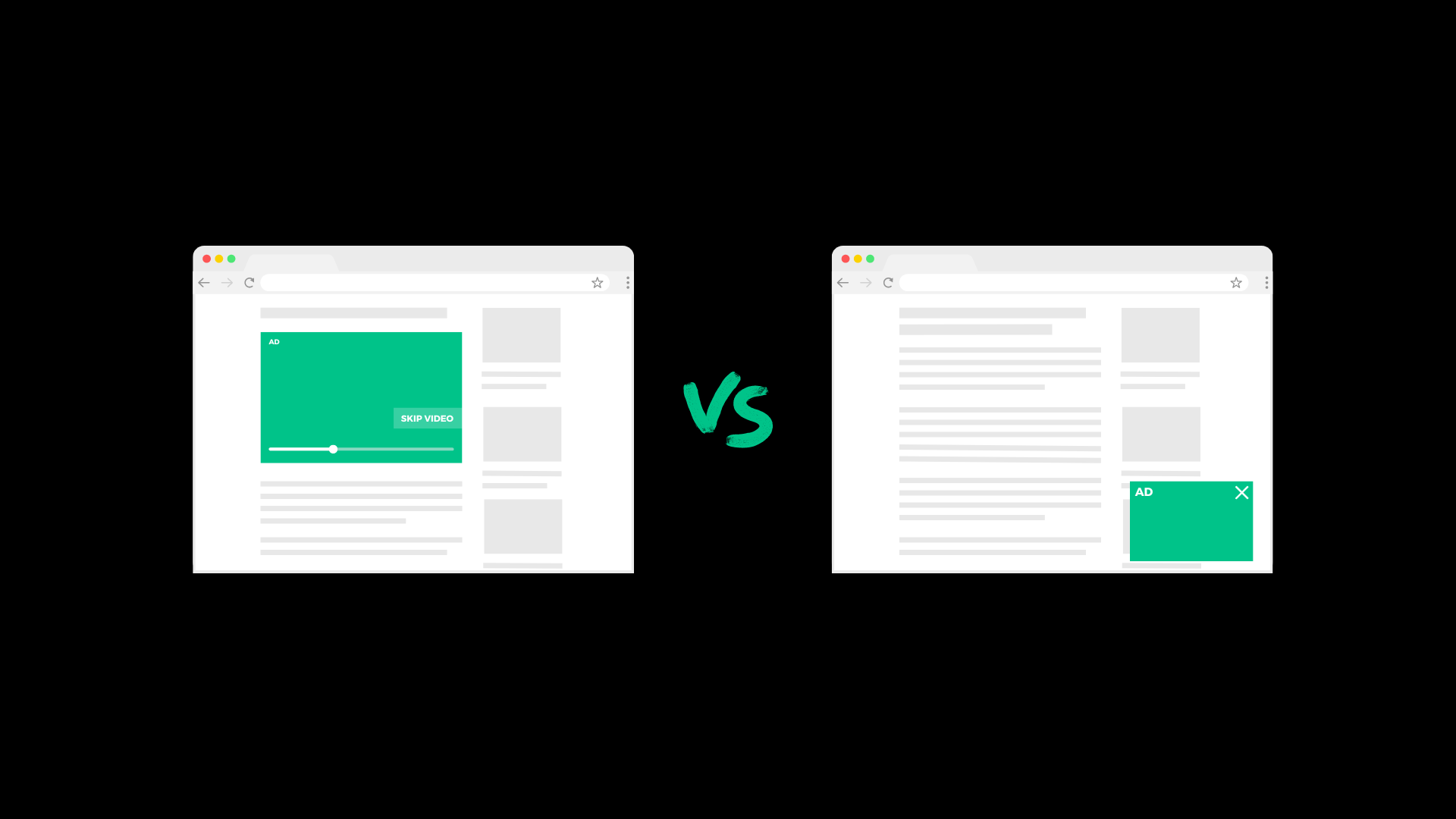Video advertising has rapidly become one of the most popular ways for companies to market their products or services. In fact, Business Insider reports a 20% increase in online video advertising spending over the previous year.
Video marketing combines visuals and sound in an easy and fun way, making it perfect for getting people’s attention. With its ability to capture an audience’s interest quickly and easily, it’s no wonder that audiovisual content is a top choice for marketers.
You’ll find video ads everywhere: on websites, social media platforms, or even when watching TV or movies! Want to learn more? Keep reading to discover what video advertising is and how it works.
What is Video Advertising?
Video advertising is a way of marketing your business or product by creating ads that will show before, during, or after videos. It’s an efficient way to get your message out quickly.
These ads vary in complexity depending on the message they are trying to convey. The most common type is pre-roll advertisements, which play before the main video. They usually last under 30 seconds and can appear as either an in-stream or out-stream ad.
- In-stream ads are served alongside content videos
- Out-stream ads are on social media platforms, websites, and apps
There are also mid-roll ads that appear during videos and post-roll ads which occur after the main video has ended. In addition, there are also interactive video ads, 360-degree ads, vertical video ads, and more.
What are the Different Video Ad Formats
There are three main video advertising formats; linear, non-linear, and companion. Let’s look at each in a little more detail.
Linear Video Ads
A linear video ad is a type of advertisement that can play at any time in the video. It usually lasts 15-30 seconds and follows a storyline or narrative. Linear ads are great for conveying an emotional message and telling an engaging story;think of the familiar television commercial format.
Non-Linear Video Ads
Unlike linear video ads, non-linear ads run simultaneously with the video they’re in. They show up at specific points in the video and don’t need to follow a storyline. These ads usually feature short snippets of text or graphic elements that can grab the viewer’s attention and get them to take action.
Non-linear audiovisual ads are great for quickly delivering a message, and often appear as overlays which play in the bottom corner of the screen during videos.
Companion Video Ads
Companion video ads complement the main video. They appear alongside it, usually as a banner ad, popup, or interactive element that links to a website. It usually takes up a small portion of the screen.
Companion ads provide additional information, and get people to click through and make purchases. They’re also used to invite viewers to take action, like signing up for promotional offers or subscribing to channels.
Where are Video Ads Shown?
You’ll see video advertisements on websites, social media, streaming services, and mobile apps. The most popular platforms include:
- YouTube
- Hulu
- Twitch
- TikTok
- Mobile apps
- Video game consoles
What Ad Tech Platforms Are Involved in Serving Video Ads
Ad tech platforms are essentially the technology behind the scenes that makes it possible to serve multimedia ads to viewers. They’re responsible for the following:
- Housing and managing the ad inventory
- Tracking audience data
- Optimizing campaigns
- Measuring campaign performance
There are several different types of ad tech platforms involved in the process. Here are some of the most popular:
Demand-Side Platforms (DSP)
A DSP purchases ad space on websites and apps through programmatic advertising. They use real-time data and bid for ad space on behalf of the advertiser.
Some popular demand-side platforms include:
- The Trade Desk
- Google Ads (formerly DoubleClick Bid Manager)
- Adobe Advertising Cloud
- AppNexus
- MediaMath
- LiveRamp (Acxiom)
Supply-Side Platforms (SSP)
An SSP, on the other hand, is software that helps website and app publishers sell their ad inventory to media buyers using real-time bidding auctions. The publisher manages their ad inventory and sets pricing rules, while the platform handles the sales and targeting of the ads.
Many of these supply-side video platforms come with features like analytics and reporting, so you can track ad performance. Additionally, they help you manage and optimize your inventory to make the most out of your ad space.
Supply-side platforms (SSPs) include:
- AppNexus
- Rubicon Project
- OpenX
- PubMatic
- Index Exchange
What is Real-Time Bidding?
Real-time bidding (RTB) is a programmatic buying method that uses real-time auctions to buy and sell ad inventory. Through the auction process, advertisers can bid on the ad space they need to reach their target audience.
The publisher sets minimum bids for their ad inventory, and then media buyers compete in an auction to win the ad space. Once the auction is over, the ad is placed on the website or app for viewers to see.
Video Ad Exchange
Ad exchanges act as a marketplace for buying and selling ad inventory. They connect demand-side and supply-side platforms, so they can bid on and purchase ad inventory in real time.
Here are five popular exchanges:
- BrightRoll (Yahoo)
- LiveRamp (Acxiom)
- Tremor Video
- SpotX
- Teads
Video Ad Technologies
Video players and ad servers handle the delivery and tracking of audio-visual advertising. They integrate with DSPs, SSPs, and ad exchanges to serve ads. Publishers can track and create reports on ad performance.
Video players and servers work with multiple ad formats and provide the option to use third-party ad tags. They also support video ad standards like VAST, VMAP, and VPAID. Many of them offer advanced features like video content management, analytics, and monetization tools, as well.
A few examples of ad servers are Google Ad Manager and SpringServe (Magnite), and some of the more common video players in the market are JW Player, Brightcove, and Ooyala.
All these technologies work together to provide an efficient system for delivering multimedia ads to users around the world. It’s a complex process which makes programmatic video advertising possible.
The Video Ad Serving Process
When you visit a website with a video player, a lot of behind-the-scenes work is happening before the ad ever gets displayed. Here’s a quick summary of the process:
- An internet user visits a site or app with a video player.
- The server replies with a code that indicates to the browser precisely where the main video content is located online. It also gives instructions to display the video in the player window.
- After downloading the video content, the player requests and bids on an advertisement from the publisher’s server. To complete this process, it sends a VAST request. At the same time, the publisher’s ad server will register an impression.
- If the bid gets accepted, the publisher’s ad server system selects which advertisement to display in the allotted space and returns the pre-determined ad markup.
- As soon as the ad markup loads in the player, a request is sent to the advertiser’s ad server to retrieve the video advertisement.
- The advertiser’s ad server will then register the impression and return a link pointing to where the video is on the content delivery network.
- After receiving that link, the online video player makes one last request to retrieve and display the actual ad file itself.
- The video advertisement is then displayed to viewers and tracked for performance metrics such as impressions, views, and completion rate.
- Finally, the advertiser receives reports with their campaign results.
Impressively, audiovisual content ads appear almost instantly; this whole process generally happens within milliseconds of the initial user request.
Video Player Requirements
To serve the ads, you’ll need a video player that supports standards like the Digital Video Ad Serving Template (VAST) and Video Player-Ad Interface Definition (VPAID).
The video player should also support HTML5 video and VAST tags for communication with the ad servers. Without them, delivering video advertisements isn’t possible.
Many video platforms already have players that meet these requirements. HTML5 video players like Video.js, Flowplayer, and JW Player also support multimedia ads. YouTube does this via its TrueView Ad Format, designed to be compatible with all video-type ad standards.
Wrapping Up
Video consumption isn’t going away any time soon – quite the opposite. It’s one of the most effective marketing strategies out there. Take advantage of it with online multimedia advertising.
With the advances in programmatic technology and video ad exchanges, video ads are delivered at lightning speed wherever needed. Although there’s a lot of complexity involved with video advertising, it can generate significant revenue for all parties involved when done right.
Besides, there are already systems to handle most of it for you. You don’t have to start from scratch. Why not give it a try?




